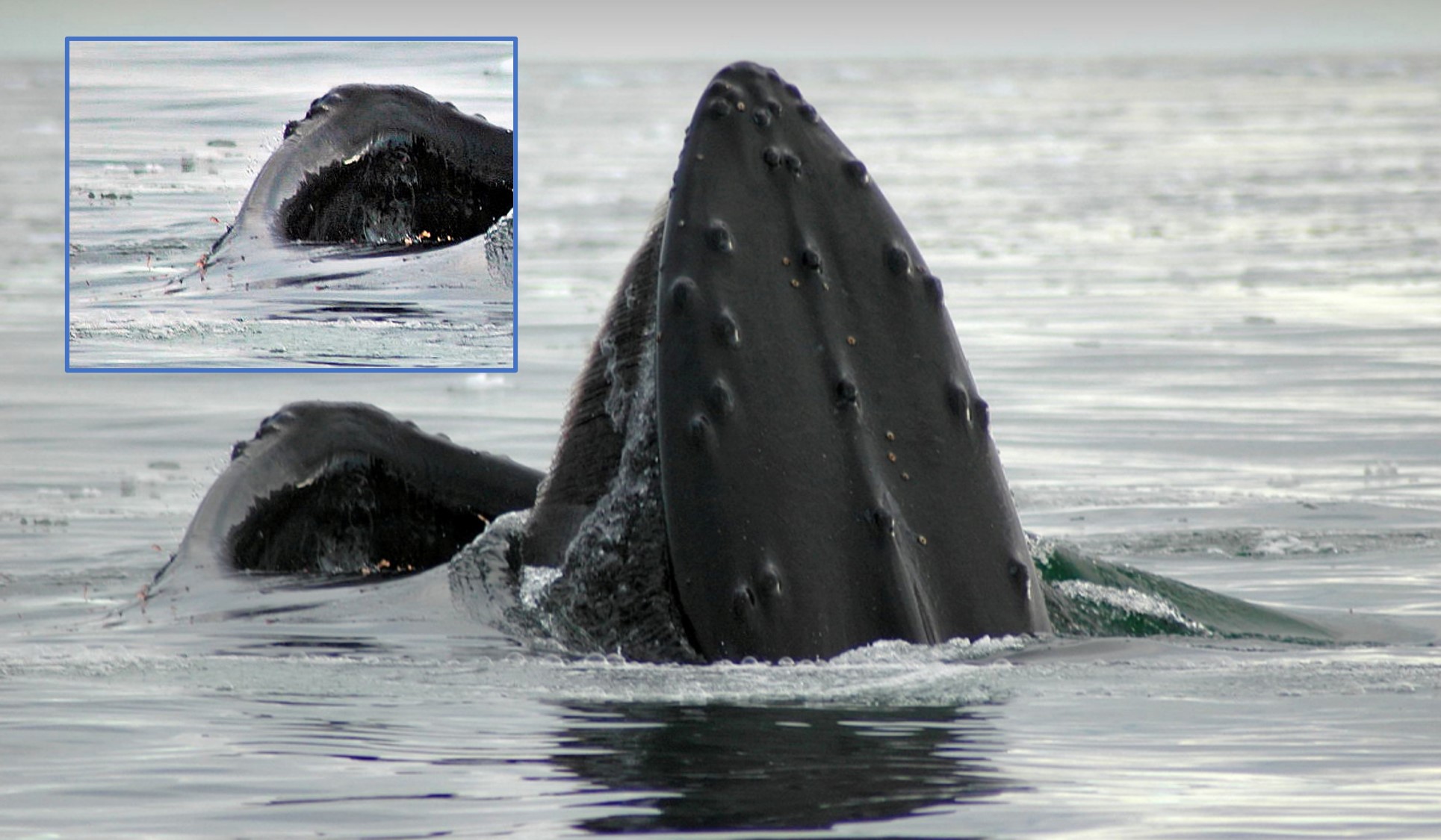
Modern whales can be clearly distinguished by their anatomy into the taxonomic suborders toothed whales (odontocetes) and baleen whales (mysticetes), with the former preying on individual prey such as fish, squid or other marine mammals. Baleen whales, on the other hand, filter small schooling fish or crustaceans such as krill from the water in large quantities using their baleen. The prehistoric whale Aetiocetus weltoni was apparently able to choose from a wider range of prey because it had both mechanisms for feeding – teeth and baleen. This discovery was made by a biologist and a paleontologist from California while examining a 25-million-year-old whale skull found by students on the Oregon coast.
The embryos of today’s blue, humpback and grey whales still hint at their relationship to Aetiocetus: they have teeth in the womb, but are then born toothless and instead develop baleen, which consist of keratin similar to our hair and fingernails and that act as a sieve for filter feeding their prey.

In the new study, Eric Ekdale, a biologist at San Diego State University and lead author, and Thomas Deméré, a paleontologist at the San Diego Natural History Museum, examined the ancient Oligocene whale skull using high-resolution computed tomography and found neurovascular evidence that Aetiocetus had teeth and baleen at the same time. Since baleen are rarely preserved in fossils, the researchers relied on digital reconstruction and looked specifically for evidence of neural pathways and blood vessels. They discovered grooves and holes in the upper part of the mouth that are internally connected to a vascular channel and that have the same pattern as the blood vessels leading to the baleen in modern baleen whales. According to the authors, this shows that the blood supply to the teeth was used for a new function to support the growth of the baleen in living baleen whales.
In addition, they also found separate connections between the large inner canal and smaller canals that apparently supplied blood to the upper teeth, consistent with the blood supply to the teeth in toothed whales living today, such as sperm whales, killer whales, harbor porpoises, dolphins, and land mammals.
“We have found evidence that supports a co-occurrence of teeth and baleen, indicating the tooth-to-baleen transition occurred in a stepwise manner from just teeth, to teeth and baleen, to only baleen.”
Dr. Eric Ekdale, biologist at San Diego State University
Change of dietary habits
Today, there are four living families of baleen whales: right whales, gray whales, rorquals, and Cetotheriidae, though only one species, the pygmy right whale, has survived. They use their baleen in such different ways when searching for food that they divide the available food resources among themselves rather than competing for them.
“Our study provides tangible fossil evidence of a major shift in feeding behavior from a raptorial carnivorous feeding mode to a bulk filter-feeding mode for obtaining food, among the largest animals that have ever lived in earth’s oceans,” Ekdale explains. “Krill are around 1/600th the size of blue whales. That’s like us humans eating nothing larger than sesame seeds floating in a pool.”

Although the mouth of Aetiocetus must have been quite full with the simultaneous presence of teeth and baleen, the position of the holes indicates that there was probably no mutual obstruction between the two “tools”. Still, some scientists puzzle over how the prehistoric whale was able to efficiently process its prey.
In the study, published in the Zoological Journal of the Linnean Society, Thomas Deméré concludes that it has been clearly demonstrated that the small holes on the palate of Aetiocetus are related to the baleen whales’ baleen, even though they superficially resemble those of other mammals.
The evolution of whales took place over hundreds of millions of years. Originally land-dwelling even-toed ungulates began to seek their food on the coasts and in the sea about 55.8 million years ago because of the drought-causing temperature rise in the Eocene, and switched their way of life entirely to living in the ocean about 53 million years ago. Today, Indohyus is considered the link between land mammals and whales.
Julia Hager, PolarJournal
More on the subject:





